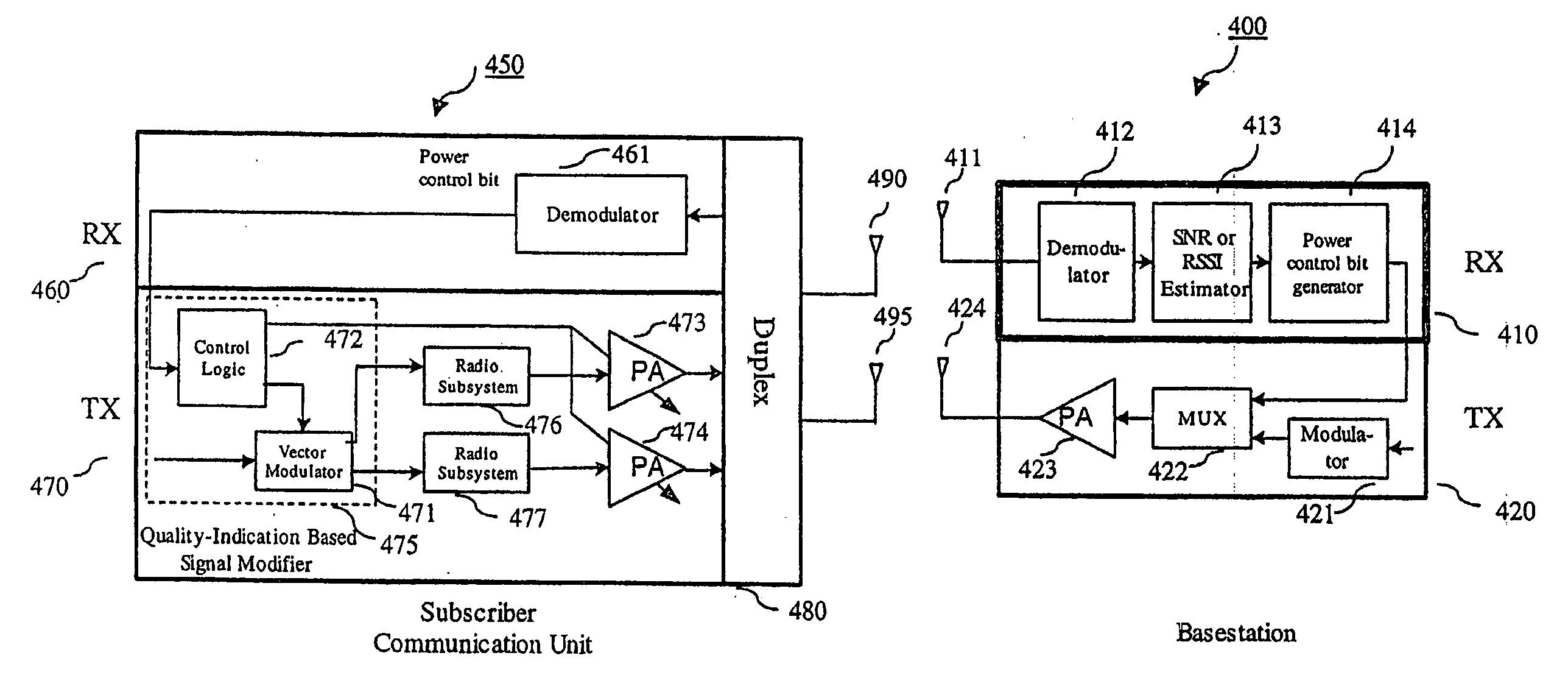Communication device with smart antenna using a quality-indication signal
a technology of quality indicators and communication devices, applied in the field of communication, can solve the problems of limited power-control signaling use, limited bandwidth per information channel, and limited serviceable users,
- Summary
- Abstract
- Description
- Claims
- Application Information
AI Technical Summary
Benefits of technology
Problems solved by technology
Method used
Image
Examples
Embodiment Construction
[0021] A transmitted signal sent from a subscriber communication device to a second communication device (e.g., a basestation) can be weakened by time or by propagation-geometry-dependent fading and multipath. In other words, a signal sent from a subscriber communication device to a basestation will undergo destructive interference due to the fact that the transmitted signal propagates along different paths and reaches the basestation as a combination of the signals each having a different phase.
[0022] Accordingly, by controlling the phase of the transmitted signal at the subscriber communication device, the combination of signals received at the basestation can constructively interfere rather than destructively interfere, or alternatively reduce the intensity of the destructive interference. The phase of the transmitted signal can be controlled through the use of multiple antenna elements at the subscriber communication device. If the rate at which the transmitted signal is contro...
PUM
 Login to View More
Login to View More Abstract
Description
Claims
Application Information
 Login to View More
Login to View More - R&D
- Intellectual Property
- Life Sciences
- Materials
- Tech Scout
- Unparalleled Data Quality
- Higher Quality Content
- 60% Fewer Hallucinations
Browse by: Latest US Patents, China's latest patents, Technical Efficacy Thesaurus, Application Domain, Technology Topic, Popular Technical Reports.
© 2025 PatSnap. All rights reserved.Legal|Privacy policy|Modern Slavery Act Transparency Statement|Sitemap|About US| Contact US: help@patsnap.com



